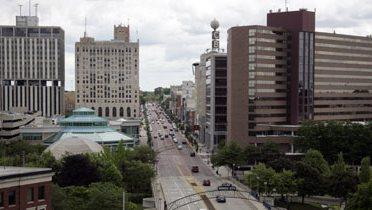This report was launched at a February 23, 2012 Detroit Economic Club and Business Leaders for Michigan event. View video from the event »
Editor’s Note: Jennifer Bradley, fellow and co-director of the Great Lakes Economic Initiative, and Bruce Katz, vice president and director, are the lead contributors from the Metropolitan Policy Program at Brookings.
Why has Michigan enjoyed the second-strongest post-recession recovery among the 50 states? Because the state and its metropolitan areas are rich in the assets that will drive the next economy in the U.S. and around the globe.
- The recovery has been powered by manufacturing, and Michigan’s metropolitan areas are where innovation prowess meets manufacturing experience. Ninety percent of the state’s high-tech industry employment and 80 percent of its advanced manufacturing jobs are in metropolitan areas. Six Michigan metropolitan areas had a higher number of patents per 1,000 workers from 2001 to 2010 than the average U.S. metropolitan area.
- Exports have moved the US economy forward, as our manufactured goods have met ready markets abroad. Michigan’s metropolitan areas are also exceptional at producing goods and providing services that are in demand abroad. Of the 100 largest metropolitan areas in the United States, Detroit is 12th in terms of export intensity (the share of its output that is exported), and Grand Rapids ranks 8th. Thirteen of Michigan’s 14 metro areas are more export-intense than the U.S. average.
- U.S. manufactured goods and exports are competitive to the extent that they are innovative. Michigan’s metropolitan areas are home to strong and emerging industry clusters and powerful anchor institutions like universities, medical centers, and research institutes that invent and commercialize new technologies and services.
For the past year, Business Leaders for Michigan, Public Sector Consultants, and The Brookings Institution Metropolitan Policy Program have been analyzing Michigan’s metropolitan areas to determine how state policy can best prepare the state’s metros, its economic engines, for the next economy.
We recommend that Michigan leaders:
1. Strengthen the link between innovation and manufacturing to increase regional exports and attract global investments.
- Reorient the 21st Century Jobs Fund to include manufacturing and innovation, particularly among small manufacturers.
- Create a strong foreign direct investment (FDI) strategy to attract innovative firms that fill gaps in key manufacturing clusters.
- Help small manufacturers and service businesses increase exports through robust export assistance, promotion, and financing.
2. Support strong regional systems to train existing workers and welcome new ones to fuel economic growth.
- Use existing workforce dollars to drive regional workforce strategies that match cluster strengths.
- Seize the opportunity to demand changes in federal workforce laws.
- Help highly educated immigrants gain Michigan professional certifications.
3. Make targeted investments that leverage distinct assets in urban and metropolitan areas to transform regional economies.
- Support a small number of urban and metropolitan industry clusters with grants tailored to the specific needs of emerging, existing, or advanced clusters.
- Designate one to three new “urban innovation districts” that connect innovation-generating anchor institutions with infrastructure, housing, and amenities, and support them with a 21st Century Places Fund.


